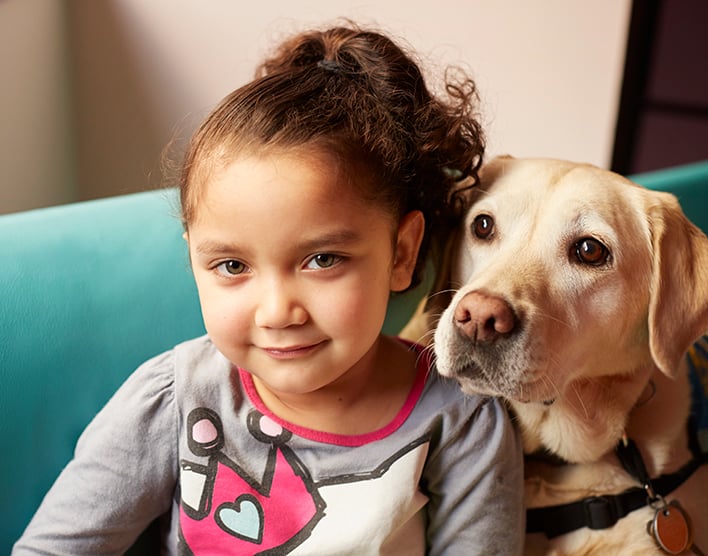Tender wagging care
Our therapy dogs spread joy and smiles at the bedside and throughout the hospital.
Visit Child Life services

Imperforate anus is a birth defect that affects about one of every 5,000 newborns, and is somewhat more common among boys than girls. It may occur alone or together with other abnormalities of the rectum (the end of intestine that connects with the anus) and anus (the body's opening to dispel solid waste). There is no known cause for imperforate anus.
There are many forms of this birth defect, including:
If a newborn does not have an anus, there is no outlet to release stool after birth. The intestine ends in a blind pouch, so your infant's stool, called meconium, remains in the intestine.
This can cause vomiting and an enlarged or swollen abdomen.
In some cases, the rectum may end high in the pelvis or it can end low, closer to the correct position.
If there is a fistula or connection between the intestine and the bladder, stool may be excreted with urine. If there is a fistula between the intestine and the vagina, stool may pass out of the vagina.
If the anal opening is missing or in the wrong position, a doctor can diagnose the condition with a physical examination.
The existence of a fistula — an abnormal connection or opening — between the intestine and bladder would be suspected if stool is excreted through the urine. A fistula between the intestine and vagina would be suspected if stool is excreted from the vagina.
To confirm the condition, your baby's doctor may request several diagnostic tests, including an X-ray and ultrasound.
To treat imperforate anus, surgery will be performed to create an opening, or new anus, to allow stool to pass. The surgery may differ, depending on whether the anus ends high or low in the pelvis.
If the intestine ends high in the pelvis, treatment usually involves three procedures:
If the intestine ends low in the pelvis, an anal opening often can be made in a single operation. The rectum is pulled down to the anus and a new anal opening is created, using a minimally invasive technique called laparoscopy. In these cases, a stoma is not necessary.
If the anal opening is in the wrong position, it will be closed and moved to the correct location.
Following the operation, babies have very frequent bowel movements that can cause severe diaper rash. A protective skin cream is used immediately after surgery.
Babies can go home once they are drinking, having bowel movements, feeling comfortable on pain medication and are free of fever.
UCSF Benioff Children's Hospitals medical specialists have reviewed this information. It is for educational purposes only and is not intended to replace the advice of your child's doctor or other health care provider. We encourage you to discuss any questions or concerns you may have with your child's provider.

One of the nation's best for gastroenterology & GI surgery

Ranked among the nation's best in 11 specialties
Tender wagging care
